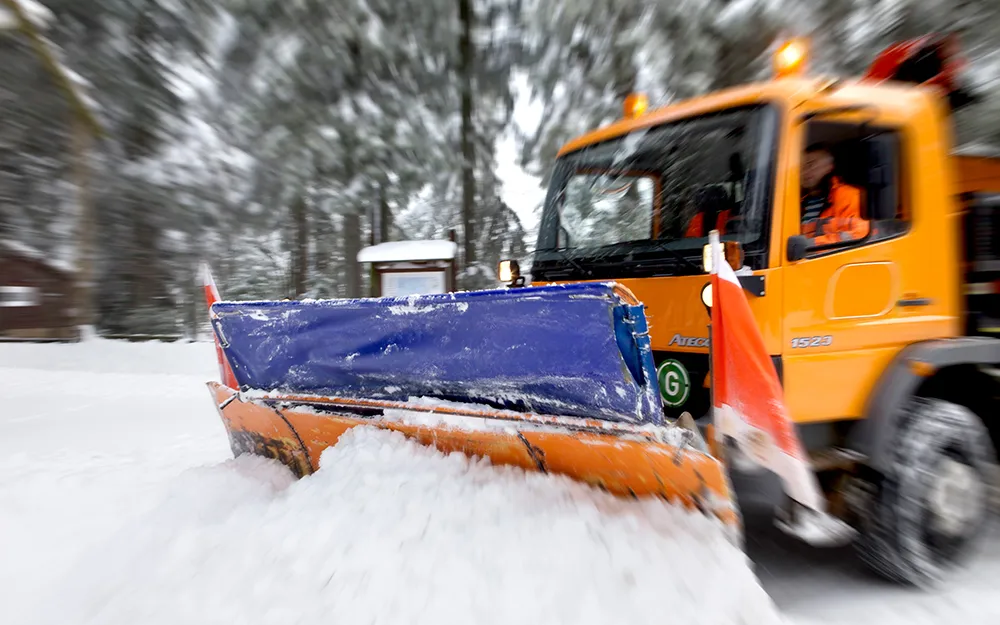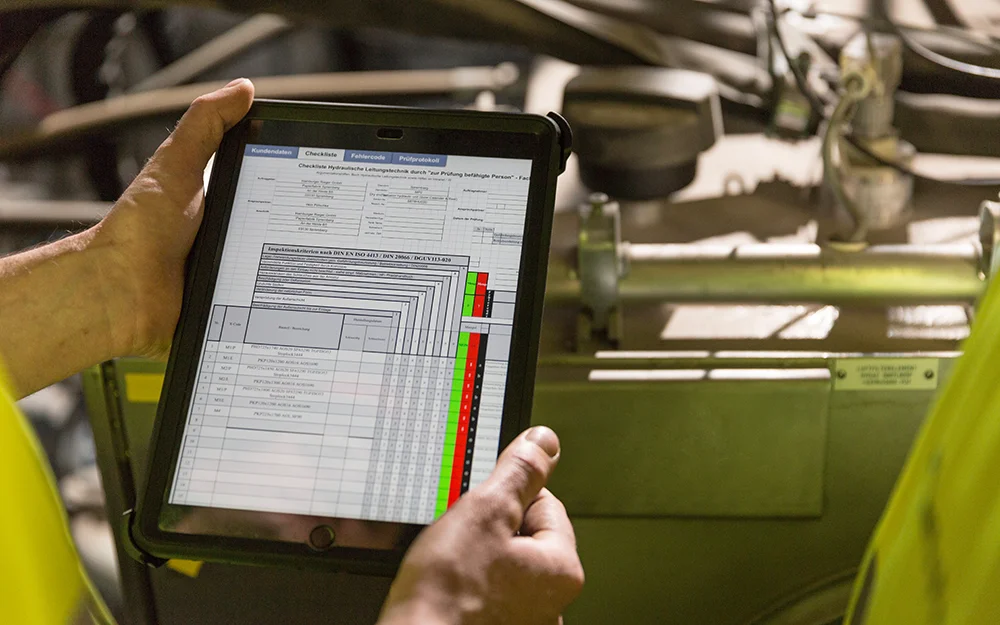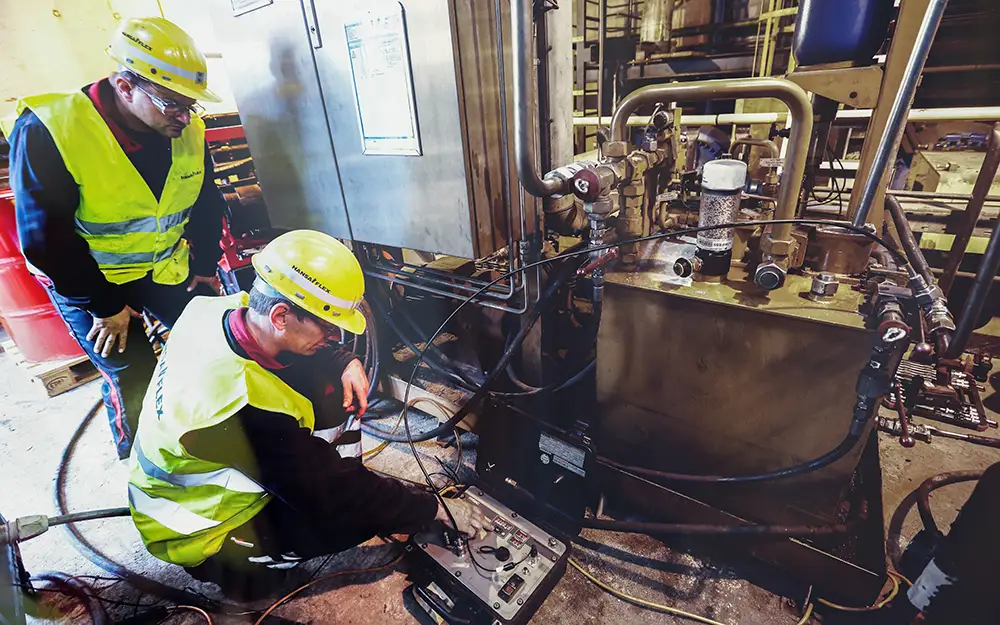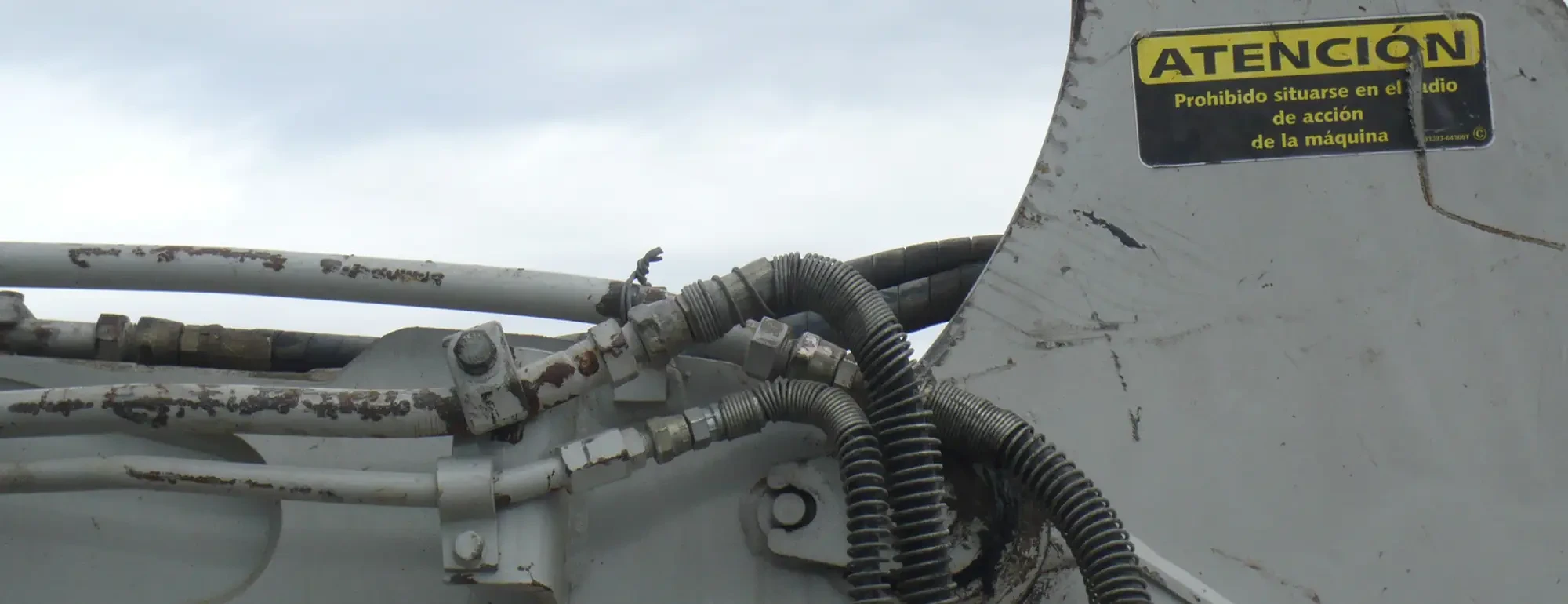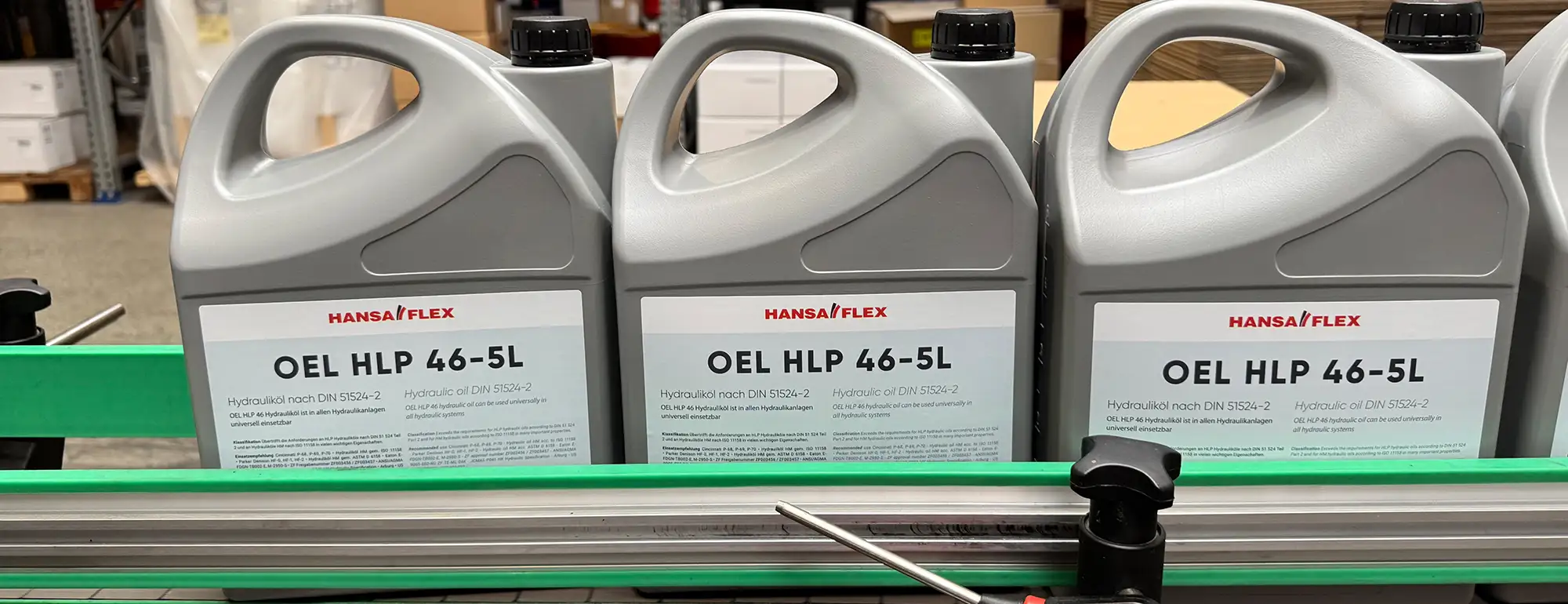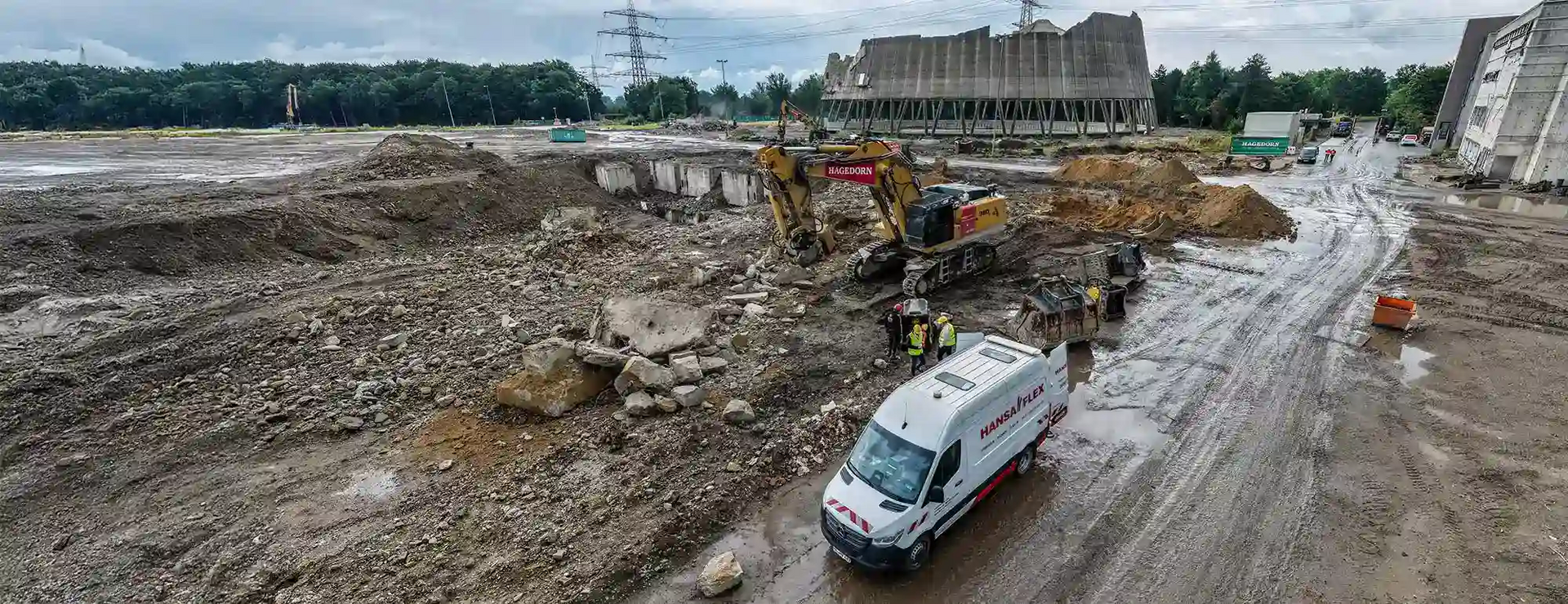The replacement interval specifies the period of operation after which a component needs to be replaced – irrespective of whether it shows any visible damage or is still working perfectly.
The aim is to avoid unplanned outages, hazards due to material failures and the risk of injury. This not only increases system availability but also protects employees.
An example from practice: The hydraulic hose lines on a hydraulic press are replaced every five years, even though there may be no visible signs of damage. This avoids the risk of a defect occurring suddenly in a hydraulic hose line, which could lead to pressure loss or the uncontrolled escape of oil. Production continues as usual and the operating personnel are protected against possible hazards.
In practice, the replacement interval greatly depends on the condition of the relevant components. Pipelines and screw fittings are normally replaced at the operator’s discretion, for example as soon as a leak is discovered or corrosion resistance can no longer be guaranteed. In the case of hydraulic hose lines, we recommend observing the replacement intervals specified by the German Social Accident Insurance (DGUV).
HOW TO: Assessment of replacement intervals
Determination of the operating conditions:
Check to see the type of environment in which the hydraulic components will be operating. Take into account factors such as dust, moisture, temperature, chemical attack and mechanical influences.
Tip for assessments: Are the components installed in a piece of road construction plant, a municipal vehicle (e.g. winter road maintenance) or in agricultural machines that are frequently exposed to salt, manure or mineral aggregates?
Identification of risk factors:
Dust: In very dusty environments (e.g. construction sites), valves and other components very quickly become dirty and blocked. Increased wear means components must be replaced more frequently.
Corrosion: Components operating in corrosive environments (e.g. exposed to salt in winter road maintenance or to chemical substances in agriculture) are more susceptible to rust and material failures. Pipelines, seals and valves are particularly critical components.
Mechanical influences: Impact from mineral aggregate and other mechanical loads from travelling on unsurfaced roads or tracks can damage components. Look out for damage to paintwork, such as scratches, indentations and other mechanical effects that adversely affect the service life of components.
Frequency of assessment:
When operating in corrosive or dusty environments, the replacement interval should be verified or reconsidered more frequently, even if there are no visible signs of damage. Regular inspections and condition assessments are crucial.
Tip: Ensure that all components that come into intensive contact with salts (winter road maintenance) or manure (agriculture) are checked after the end of the relevant season.
Adjustment of the replacement interval:
Dusty environments: Valves and seals operating in dusty environments need to be replaced at shorter intervals than those in standard environments in order to avoid failures due to wear or dirt.
Recommendations for corrosive environments: For winter road maintenance machinery or agricultural equipment, the inspection or replacement intervals should be shortened by 20 – 30% due to the greater risk of corrosion.
Tip in the case of mechanical loads: For components regularly exposed to mineral aggregate impact or other mechanical influences, a more detailed examination and, where necessary, a shortened replacement interval should be implemented – before a pipeline or hydraulic hose line bursts and contaminates soil with hydraulic oil, which brings its own consequences and costs.
Recommended inspection points:
- Seals, hydraulic hose lines and pipelines must be checked regularly for cracking, corrosion and wear
- Take into account any risk assessment with suggested replacement intervals provided by the manufacturer
- In the case of valves and pumps, look out for contamination with dirt and the build-up of deposits.
- Check all components for mechanical damage, such as signs of abrasion, bulges, kinks, indentations or cracks that could be caused by mineral aggregate impact or shock loads.
Tip: Do not limit your consideration to the replacement intervals given in the operating manuals for the machines or systems. These replacement intervals may need to be considerably shortened, especially for systems used in corrosive environments. This applies in particular to the use of standard components in maritime applications. We would be pleased to advise you on the optimum choice of hydraulic components for use in challenging environments in order to achieve the correct balance between replacement intervals and cost effectiveness.
-

Sven Bötjer
Product Manager Pipe and Special Fittings,
Accessories and Tools

 Mexico
Mexico

